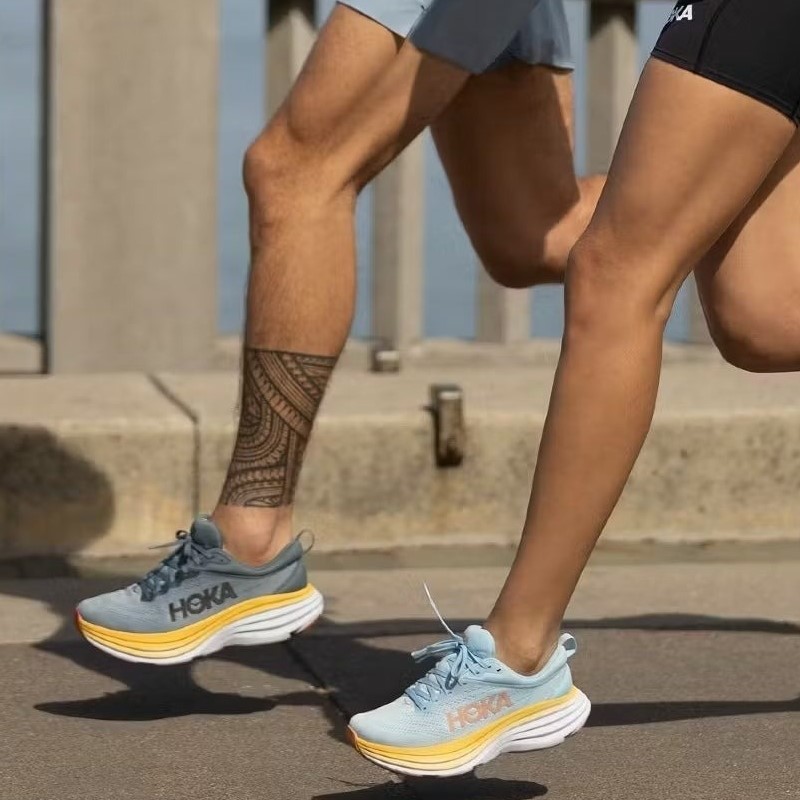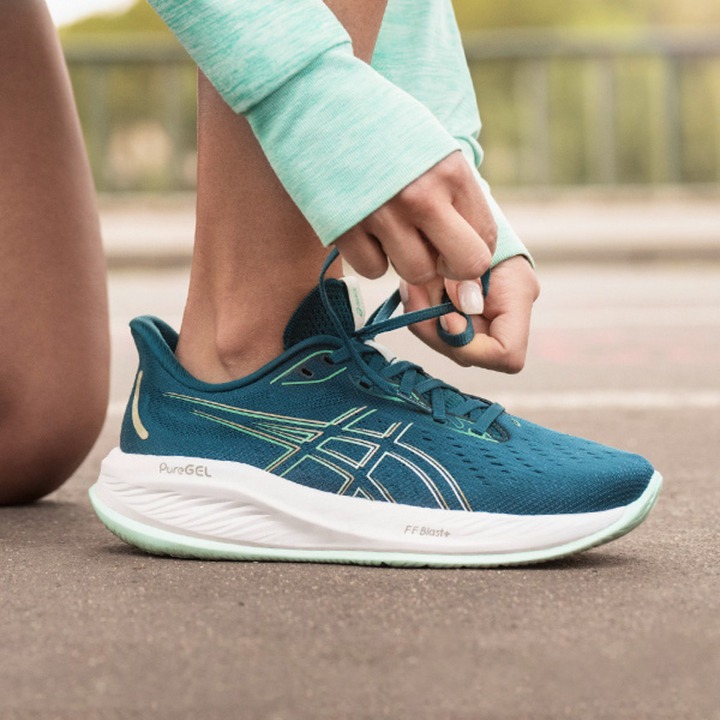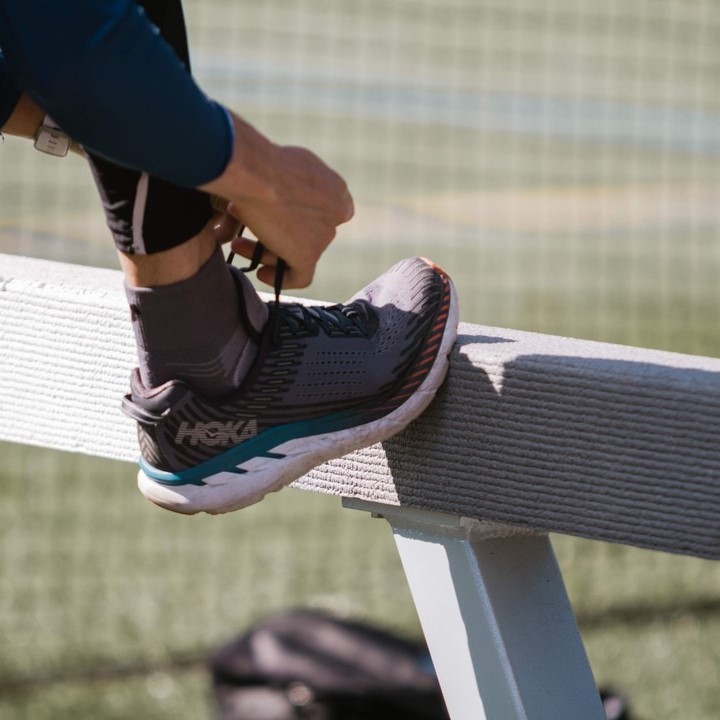When it comes to running, one of the most common questions among athletes and fitness enthusiasts is, how many miles do running shoes last? The lifespan of running shoes is a crucial factor in ensuring optimal performance and preventing injuries. Understanding the mileage expectations for your running shoes can help you make informed decisions about when to replace them. This guide will delve into the factors affecting the lifespan of running shoes, the general mileage you can expect, signs that indicate it’s time for a replacement, tips for extending the life of your shoes, and the importance of choosing the right running shoes for your needs.
Identifying Signs of Wear and Tear
Knowing when your running shoes are past their prime is crucial for preventing injury. To maintain peak performance, it’s important to spot the signs of wear and tear early. Look for these indicators:
- Outsole Wear: Check the bottom of your shoes. A worn-out outsole with smoothed treads can lead to less traction and more slips.
- Midsole Compression: Feel the midsole, which absorbs shock. If it’s too hard or shows wrinkles, it means it’s compressed and less effective.
- Upper Damage: Inspect the shoe’s upper part for holes or tears. This can affect the fit and support.
- Insole Shape: Remove the insole and evaluate its condition. A flat, thin insole won’t provide enough cushioning.
- Tread Pattern Fading: Look at the tread pattern. Once faded, it indicates the shoe can’t grip surfaces well.
Be proactive in checking your shoes for these signs, as they are the first alert to when you need to start thinking about a replacement. Remember, the amount of miles running shoes last can vary, but being attentive to their condition is key to your running health.
Understanding the Factors That Affect Running Shoe Longevity
The lifespan of running shoes can vary widely. Many factors impact how many miles your shoes can last. Understanding these can help you make your shoes last longer and save money.
- Material Quality: High-quality materials often withstand more wear and tear. Cheaper shoes may not last as long.
- Running Frequency: The more you run, the quicker your shoes will wear out. Running fewer miles each week can extend your shoes’ life.
- Body Weight: Heavier runners may find their shoes wear down faster due to increased pressure on the midsole and outsole.
- Running Form: Your gait affects which parts of the shoe wear down. Overpronators or underpronators might see uneven wear.
- Maintenance: Regular cleaning and proper shoe storage can preserve the materials and structure.
- Environment: Running on rough terrain, like trails, can speed up wear and tear compared to smooth, paved paths.
- Weather Conditions: Frequent running in rain or heat can break down materials faster.
By paying attention to these factors, you can gauge how many miles your running shoes might last. Adjust your habits to extend the life of your shoes.
Ideal Mileage: How Long Do Running Shoes Typically Last?

The standard lifespan for running shoes is typically between 300 to 500 miles. This range, however, is not set in stone. Various variables affect how many miles your running shoes can endure before they require replacement. The quality of the shoe materials plays a significant role. Premium shoes crafted with high-grade materials may offer extra miles. Your running frequency is also a key factor. If you run daily, your shoes may hit their mile cap faster. Heavier runners might put more stress on their shoes, leading to quicker wear. How you run and where you run play parts too. An uneven gait or rough terrain wears shoes down unevenly and more rapidly. These mileage figures give you a baseline, but you must also consider the unique factors of your running lifestyle. To keep on track, monitor wear and tear closely and listen to what your shoes—and your body—tell you about the state of your footwear.
The Impact of Running Style and Terrain on Shoe Lifespan
Your running style and the terrain you choose have a big impact on how many miles your running shoes last. A careful look at these elements can help you understand when it’s time for a new pair.
- Running Style Effects: Different running styles put varying stress on shoes. For example, if you’re an overpronator, meaning your feet roll inward more than normal when you run, this can cause extra wear on the inside edge of your shoes. Conversely, underpronators, with feet that roll outward, might see more wear on the outer edges. Even the way your foot strikes the ground, be it on the heel, midfoot, or forefoot, changes how your shoe wears down.
- Terrain Influence: The surfaces you run on also play a role in the lifespan of your running shoes. Smooth, paved paths tend to be gentler on shoes, allowing them to last longer. Rough terrains, like trails, can accelerate wear and tear due to more aggressive contact with rocks, roots, and uneven ground. If you frequently change between different terrains, pay extra attention to how your shoes respond after each run.
By understanding your personal running style and being mindful of the terrain you’re tackling, you can anticipate which parts of your shoes might wear out sooner and take steps to maximize their lifespan.
Tips for Extending the Life of Your Running Shoes
Preserving your running shoes not only saves you money but also ensures consistent support and comfort during your runs. Here are practical tips for extending the life of your running shoes:
- Rotate Your Shoes: If possible, don’t wear the same pair every day. Use multiple pairs and rotate them. This gives your shoes time to bounce back to their original shape and reduces the wear rate.
- Keep Them Dry: Moisture speeds up the breakdown of shoe materials. After a wet run, remove the insoles and let the shoes air dry completely before your next use.
- Clean Gently: Don’t toss your shoes in the washer. Instead, clean them with a soft brush and mild soap. Harsh cleaning can damage the materials and structure.
- Use Correctly: Only use running shoes for running. Wearing them for other activities can cause unnecessary wear.
- Proper Storage: Store your shoes in a cool, dry place out of direct sunlight. Extreme temperatures and UV rays can degrade the materials quickly.
- Insert Support: Consider using customized insoles. They can improve fit and support, potentially leading to less stress on the shoes.
- Avoid Rough Surfaces: Stick to smooth paths whenever possible. Rough and uneven terrains wear out shoes more quickly.
- Lace Properly: Ensure you lace your shoes correctly. Proper lacing provides better support, evenly distributes pressure, and reduces wear.
By following these tips, you can prolong the ‘how many miles do running shoes last’ question and continue to enjoy a comfortable and safe running experience.
When to Replace: Tracking Your Shoe’s Mileage

Knowing when to replace your running shoes is key for your comfort and safety. Here’s how to track their mileage effectively:
- Log Your Runs: Keep a record of your running miles. Use a journal or an app.
- Check Wear Patterns: Besides counting miles, check your shoes frequently for wear signs.
- Listen to Your Body: Be alert to new aches or pains, which may signal it’s time for new shoes.
- Mark the Date: Write the start date on your shoes. Most last 300 to 500 miles or about 4-6 months.
- Visual Inspections: Look at your shoes often. Notice changes in their appearance and structure.
Your running shoes are your partners on the road. Paying attention to how many miles they’ve covered helps you know when it’s time to replace them. Track their mileage, inspect them regularly, and be mindful of your body’s feedback. This will ensure you always run with proper support and protection.
The Role of Shoe Rotation in Preserving Your Running Shoes
Rotating your running shoes is key to extending their lifespan. It’s a simple strategy that can significantly impact how many miles do running shoes last. Here’s why and how to efficiently rotate your shoes for maximum longevity:
- Allow for Recovery: Just like your body, shoes need time to recover after a run. Materials compress from your weight during a run. Rotating shoes allows them to bounce back to their natural shape.
- Even Out Wear: Using different pairs evens out the stress and wear on your shoes. It prevents overuse on a single pair, which contributes to quicker breakdown.
- Adapt to Different Terrains: Different shoes excel on different surfaces. Having various pairs for various terrains ensures each shoe is used in its ideal conditions.
- Maintain Shoe Properties: With rotation, each shoe maintains its cushioning and support features longer, which means better protection for your feet.
- Save Money in the Long Run: Although initially more expensive, having multiple pairs means less frequent replacements, saving money over time.
To put this into practice, maintain at least two pairs of running shoes. Rotate them between runs or designate them for specific types of workouts or terrains. Keep track of the mileage for each pair to ensure none are overused. This simple tactic will contribute greatly to your running shoes’ durability, comfort, and performance.
Choosing the Right Running Shoes for Maximum Durability

Selecting durable running shoes is vital for long-lasting comfort and performance. Here are some key points:
- Prioritize Quality Materials: Look for shoes made with robust materials. They tend to last longer.
- Consider Your Running Habits: Match shoes with your running freqeuncy and style. It ensures they fit your needs.
- Opt for Specialized Shoes: Choose shoes designed for specific terrains if you often run off-road.
- Seek Professional Advice: A professional fitting can help find the best shoe for your foot type.
- Read Reviews: Look up what other runners say. Reviews can point you to long-lasting models.
- Think Long-Term: Investing in a slightly pricier, high-quality pair can be more cost-effective over time.
The question, ‘how many miles do running shoes last’, largely depends on choosing the right pair from the start. If you select well, your shoes will offer more miles of stable and protected running. Remember to replace them when necessary to keep your runs safe and enjoyable.



